तिल फसल के रोग तथा उनका प्रबंधन
Sesame Phyllody
Sesame Phyllody is caused by phytoplasma organism. Disease symptoms are evident before flowering (witches broom) and at the time of flowering (phyllody). Early infection causes severe witches broom with complete suppression of flowering . Conversion of floral parts into leaf like structures .
Yellowing and cracking of capsules. Seed germination in capsules . Increase amount of IAA due to infection is responsible for excessive proliferation of vegetative and reproductive parts of the plant .
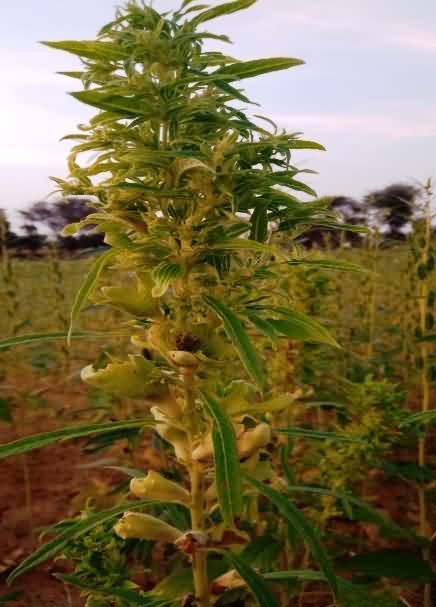
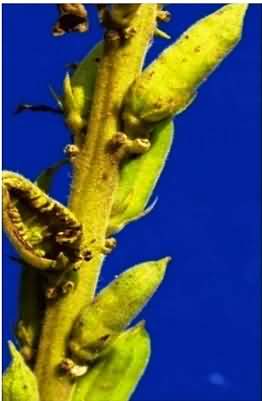
Symptoms of Sesame Phyllody
Causing organism, Phytoplasma, belong to candidatus phytoplasma asteris (16 Sr II group). It survive on host and weeds like Brassicas, Gram and in leaf hoppers (Jassid).
Transmission/ Vector
- Insect transmission by leaf hopper (Orosius albicinctus).
- Dodder Transmission .
- Graft transmission
Availability of one or more of infected hosts and the vector throughout the year can cause infection on sesamum at any time during the crop period. Temperature of 25-40 oC is favorable for transmission of the phytoplasma .
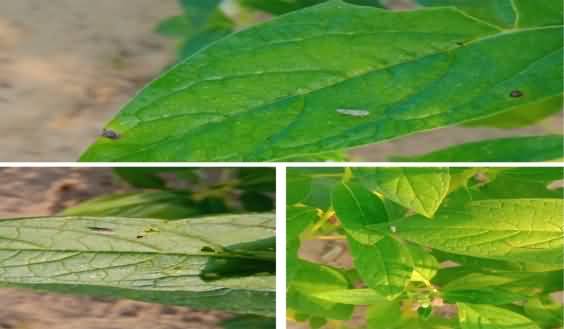
Insect transmission by leaf hopper (Orosius albicinctus )
Management Sesame Phyllody
1. Cultural practices-
Rogue out early infected plants to check further spread of the diseases. Removal of weeds and other host from the field. Adopt late sowing. Use intercropping system such as sesamum + pigeon pea(6:1).
2. Chemical control –
Spray Tetracycline @ 300ppm as sown as disease appear in field . Spray insecticide like Imidacloprid 17.8 % SL @0.25ml/lits and Dimethoate 1ml/ lits. to control insect vactor( 3 sprays at 30, 40, 60 DAS) . Apply thimet 10G(10kg/ha) or phorate 10G (10K/ha) into soil at the time of sowing.
3. Resistant varieties -
Sesame Phyllody can be managed by using disease resistant varieties like TMV - 4, PKV-NT-11
2. Root rot or stem rot or charcoal rot of sesame
Causing Organism: Macrophomina phaseolina (Sclerotial stage : Rhizoctonia bataticola)
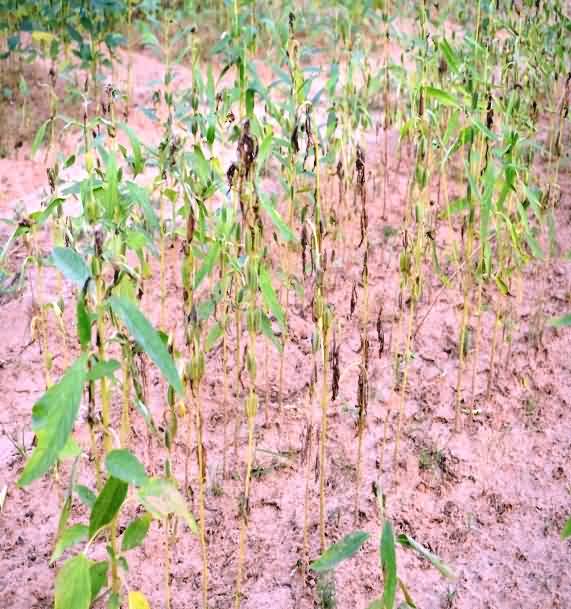
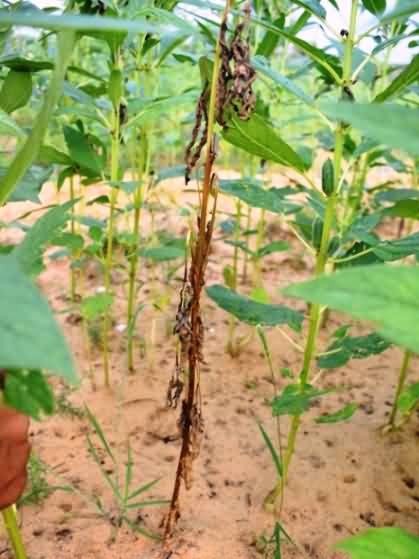
Symptoms:-
The disease symptom starts as yellowing of lower leaves, followed by drooping and defoliation. The stem portion near the ground level shows dark brown lesions and bark at the collar region shows shredding.
The sudden death of plants is seen in patches. In the grown-up plants, the stem portion near the soil level shows large number of black pycnidia. The stem portion can be easily pulled out leaving the rotten root portion in the soil.
The infection when spreads to pods, they open prematurely and immature seeds become shriveled and black in colour. Minute pycnidia are also seen on the infected capsules and seeds. The rotten root as well as stem tissues contain a large number of minute black sclerotia. The sclerotia may also be present on the infected pods and seeds.
Pathogen
The fungus produces dark brown, septate mycelium showing constrictions at the hyphal junctions. The sclerotia are minute, dark black and 110-130um in diameter. The pycnidia are dark brown with a prominent ostiole. The conidia are hyaline, elliptical and single celled.
Favourable Conditions
Day temperature of 30 0C and above and prolonged drought followed by copious irrigation.
Mode of Spread and Survival
The fungus remains dormant as sclerotia in soil as well as in infected plant debris in soil. The infected plant debris also carry pycnidia. The fungus primarily spreads through infected seeds which carry sclerotia and pycnidia. The fungus also spreads through soil-borne sclerotia. The secondary spread is through the conidia transmitted by wind and rain water.
Management
Deep ploughing in summer.Follow crop rotation. Soil amendment with farm yard manure @ 12.5 tonnes/ha is helpful in reducing the incidence of the disease. Destroy the diseased plant debris by burning of burying in the soil.
Seed treatment with T. viride @4g/kg or P. fluorescens @ 10g/ kg of seed or Carbendazim or Thiram 2g/kg of seed. Apply farm yard manure or green leaf manure at 10 t/ha or neem cake 150 kg/ha. Spot drench with Carbendazim at 1.0g/lit.
Authors:
Pinki Devi Yadav, Deepak shrama, Arpit meena
Sri Karan Narendra Agriculture University, Jobner
Email:
